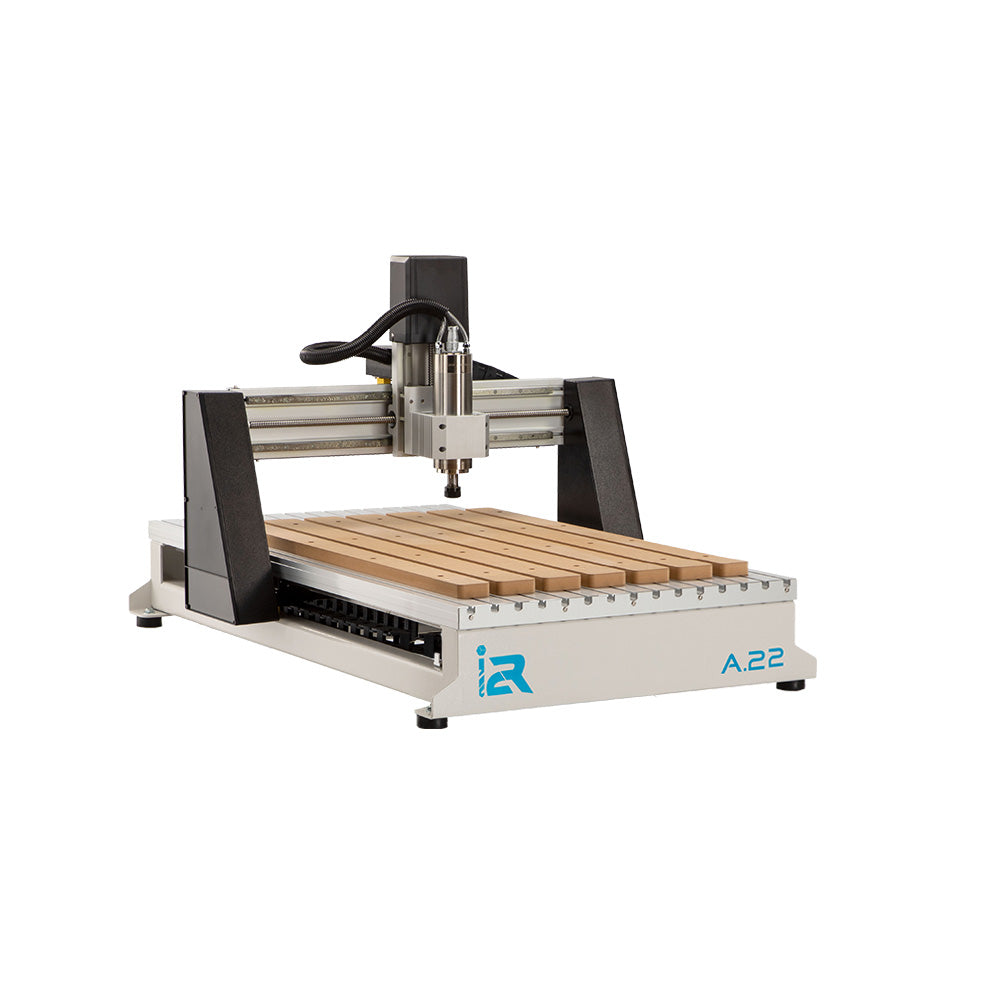7 Beginner Tips For CNC Machining Plastic
Are you a beginner interested in CNC machining plastic? You've come to the right place. Here are 7 quick tips on how to improve your CNC for the best finishes on plastics like acrylic. Acrylic; also known as Plexiglass, is a very versatile material and can be found in many types of products. One example is making PPE like this free standing, sneeze guard made for a local business below.
 |
|
.25" Acrylic, CNC Machined, PPE for Business
|
1. Know your material

We recommend working with cast acrylic over extruded as cast acrylic will result in a cleaner finish when machined on a CNC. It's also even more transparent than glass. Extruded acrylic is more brittle and will crack easier making it harder to work with.
The cast acrylic sheet in the example is labeled .25" thick but it is important to note that each sheet will vary slightly in thickness. In this example, the thickness measured for the acrylic was .213".

|
| This CNC machined acrylic test piece used an offset of .005" |
If you plan to assemble the pieces of your project together, getting the thickness of each sheet is important to be aware of when you CNC the slots. For the slots, I used an offset of .005” for a nice fit.
2. Choose the right bit
A good machining strategy for plastic is to cut using a conventional direction. When working on any project, you want to use the right tool for the right job. The same is true when working with plastic. A best CNC practice is to use a spiral up cut with a single flute.
 |
In this case we recommend an O'Flute for the best acrylic/Plexiglass results. The upward motion of the bit is ideal for chip extraction and will offer a clean and optimal finish. To avoid bit chatter and cutter deflection, choose a bit that has the shortest flute length for the thickness of your material and machine at a conservative speed. For this project we used an 1/8"spiraled O flute. |
3. Securing your material
It is very important that you are able to secure your material so that it's as flush with the bed of the CNC as possible. When running your CNC, holding down your material so that there is no flex in the acrylic will save you headaches down the road.
If you have flex in your material, you will have excess vibration which will cause your cuts to be jagged and rough. It may also lead to cracks in your acrylic. This is especially true when working with even thinner material as it will be lifted by the bit during cutting and cause breakage.
Using double sided tape, adhesive spray, or vacuum hold down can help alleviate flexing of your material during cuts. You'll need to be extra cautious when cutting very fine/thin plastics. Double sided tape is a cost friendly method and has proven to be very reliable. If your CNC has aluminum T-slots like the i2R does, Hold down clamps are a simple and effective way for securing your material.
4. Know your Feeds and Speeds
You can add, save, select and change your feed and speeds in the tool library on VCarve. Watch this video on Basic Guide to CNC With Vectric VCarve Pro.
 |
Spindle RPM of 17,000 is a sweet spot here for the i2R's brushless spindle.
A good feed rate is 59 IPM or 1500 mm/min.
|
When you CNC acrylic you must find the perfect balance in speed. Cutting too fast will result in too much friction and you'll risk melting the plastic and wearing out your bit too. Cutting too fast will result in too much friction and you'll risk melting the plastic and wearing out your bit too.
5. Know Depth of Cut
 |
The general rule of thumb when figuring out your depth of cut is to use half the diameter of your tool. For this acrylic project though, .0535" depth of cut worked well. |
6. Set Your Tabs

If you're using hold down clamps, you'll definitely want to make use of tabs to keep from having your material fly out. You don't want to make your tabs too thick or else you'll have to sand them and it will leave a rough edge. The goal here is get the tabs just right and that they aren't too thin that your material flies loose. For the thickness of this project, a length of .1" and .03" worked well.
7. Listen to your cut
When ever machining on your CNC, always listen to the sound the spindle makes during cutting. The noise can tell you a lot about how your spindle is performing. The louder and more high pitch the sound, the more aggressive your spindle is working. The more aggressive the cut, the rougher your finish will turn out.
If the sound is too loud, slow down the cut by lowering your feed rate. In UCCNC, you can simply slow your feed rate while your CNC is running by clicking the (-) button next to the F-SET.
You can also slow down the spindle RPM in your CNC the same way by clicking the (-) button next to your S-SET. The max RPM on the i2R CNC air cooled spindle is 24,000 RPM.
Document and Have Fun!
Make sure to document everything you learn. Take note of what works best for each scenario and project. There will be many projects that will have similarities and you'll be glad you kept a good journal to reference.
Every project you make is a learning experience, good or bad. Be patient and most of all have fun!
Need inspiration? Check out our social media!


